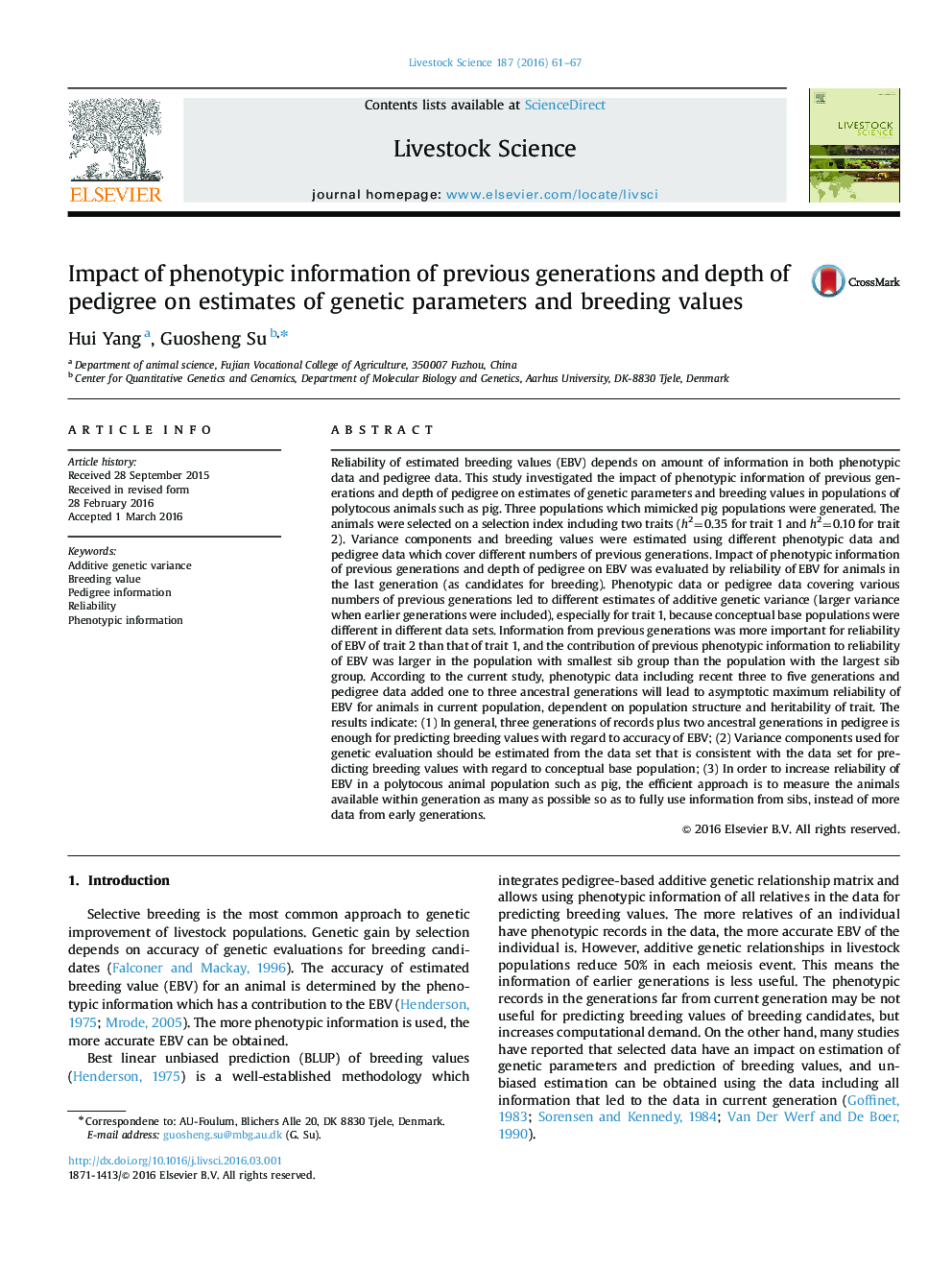| Article ID | Journal | Published Year | Pages | File Type |
|---|---|---|---|---|
| 5789946 | Livestock Science | 2016 | 7 Pages |
â¢Various numbers of generations in data lead to different estimates of genetic variance.â¢Impact of previous data on accuracy of EBV depends on population structure.â¢In general, 3 generations of records plus 2 ancestral generations are enough in pigs.
Reliability of estimated breeding values (EBV) depends on amount of information in both phenotypic data and pedigree data. This study investigated the impact of phenotypic information of previous generations and depth of pedigree on estimates of genetic parameters and breeding values in populations of polytocous animals such as pig. Three populations which mimicked pig populations were generated. The animals were selected on a selection index including two traits (h2=0.35 for trait 1 and h2=0.10 for trait 2). Variance components and breeding values were estimated using different phenotypic data and pedigree data which cover different numbers of previous generations. Impact of phenotypic information of previous generations and depth of pedigree on EBV was evaluated by reliability of EBV for animals in the last generation (as candidates for breeding). Phenotypic data or pedigree data covering various numbers of previous generations led to different estimates of additive genetic variance (larger variance when earlier generations were included), especially for trait 1, because conceptual base populations were different in different data sets. Information from previous generations was more important for reliability of EBV of trait 2 than that of trait 1, and the contribution of previous phenotypic information to reliability of EBV was larger in the population with smallest sib group than the population with the largest sib group. According to the current study, phenotypic data including recent three to five generations and pedigree data added one to three ancestral generations will lead to asymptotic maximum reliability of EBV for animals in current population, dependent on population structure and heritability of trait. The results indicate: (1) In general, three generations of records plus two ancestral generations in pedigree is enough for predicting breeding values with regard to accuracy of EBV; (2) Variance components used for genetic evaluation should be estimated from the data set that is consistent with the data set for predicting breeding values with regard to conceptual base population; (3) In order to increase reliability of EBV in a polytocous animal population such as pig, the efficient approach is to measure the animals available within generation as many as possible so as to fully use information from sibs, instead of more data from early generations.
